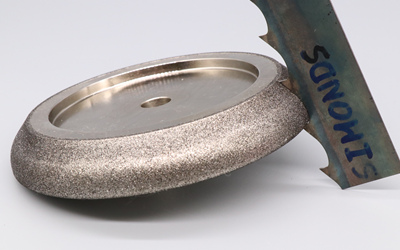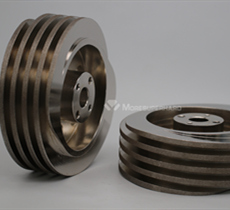
1. The edge of the workpiece is partially chipped:
a. The plating time is too long: At this time, the parameters can be adjusted to reduce the plating thickness time.
b. Diamond is not wear-resistant and not sharp enough: control the grade of diamond, such as TI or TTI.
c. The diamond particle size is too large: the control of incoming materials is particularly important, and must be sure the diamond particle size is controlled.
2. Burning the workpiece:
a. The cooling is not enough: adjust the cooling water for control.
b. The grinding wheel is less exposed and not wear-resistant: reduce the time for plating thickness.
3. Workpiece scratches:
a. Coarse diamond particles: adjust the diamond grit.
b. Coarse diamond are mixed on the grinding wheel: the plating solution is checked and replaced in time, and the process operation is standardized.
c. There is floating sand on the diamond surface: do a good job in the pretreatment of the diamond, and strengthen the appearance inspection of the grinding wheel.
4. Broken tip of diamond grinding wheel:
a. There is a lot of diamond exposure: adjust the process and control the plating time
b. The diamond is not sharp: replace the sharp diamond.
c. Process Optimization. Less the feed and Increase the speed.
5. The diamond falls off the grinding wheel:
a. Incomplete pre-treatment of diamond: do secondary pre-treatment and strict operating procedures.
b. Oxidation of grinding wheel body: Do a good job in preventing oxidation isolation.
c. Excessive diamond exposure: adjust the process and control the plating time.
d. Diamond holding force: The holding force of the coating on the diamond needs to reduce the current and the matching degree of the diamond shaping process.

If you have any other questions about the specific use of electroplating grinding wheel, please feel free to leave a message and ask us,
Moresuperhard's professional staff will answer your questions in the first time.
---EDITOR: Alan Wang,Jackie Wang
---POST: Jackie Wang




.png)



